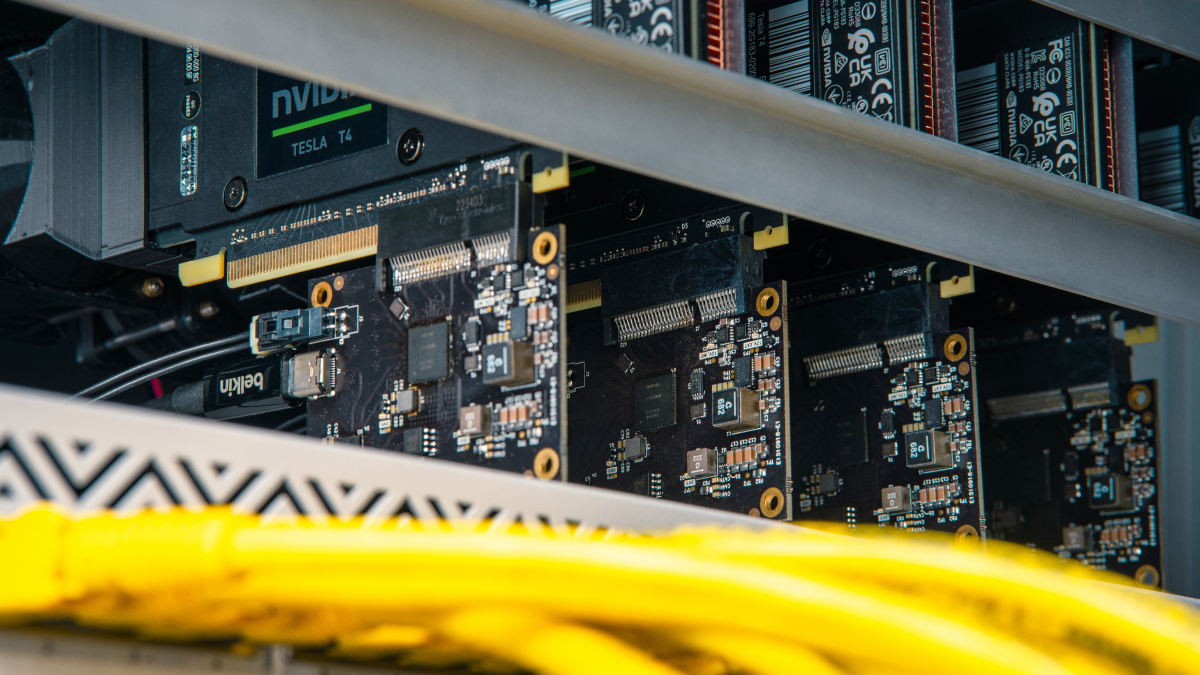High-speed Thunderbolt and 10GbE connectivity for Jetson-based VR, smart camera and industrial devices
Published:
Topics: Open hardware, Open machine vision
In machine vision applications, such as smart cameras, VR or industrial inspection systems, the collected video footage with intermediate results of on-board processing is often off-loaded from the embedded device like an NVIDIA Jetson SoM gathering the data to other parts of the system for further processing. This poses the challenge of establishing a reliable, high-throughput link for uploading large amounts of data.
Antmicro has been working with NVIDIA Jetson SoMs family from the very beginning, starting from the original Jetson Nano up to the most recent Orin series, helping our customers choose and build custom solutions tailored to their specific needs. Typically, embedded SoMs like these offer a 1Gb Ethernet interface or USB 3.x which can be configured into an upstream-facing mode. However, 1GbE or USB 3.0 (whose transfer rate tops out at 2 Gb/s) become insufficient in more advanced cases which require more video (or other data) throughput due to higher resolution, sampling speed, or both.
In this note, we’ll describe two approaches to providing high-speed connectivity using Jetson’s on-board PCIe interfaces that we apply in our projects: implementing a Thunderbolt-based uplink and integrating 10Gb Ethernet.
Implementing a Thunderbolt uplink
Being able to transport multiple interfaces at the same time and capable of pretty impressive throughputs up to 40 Gb/s in Gen 3.0, Thunderbolt is probably the most interesting option to establish a high-speed uplink with Jetson-based embedded devices. There are a few programmable bridges which wrap some of the commonly used communication interfaces into Thunderbolt, including the JHL6340SLLSQ Thunderbolt 3.0 Controller from Intel. The chip can be configured as a transparent PCIe x4 extender allowing you to connect remote PCIe devices such as GPUs, Ethernet controllers or measurement cards to a local system.
Thanks to our internal and customer-facing work with Thunderbolt, we were able to create and release an open source board implementing the PCIe-Thunderbolt bridge enabling this in practice. Details about the adapter’s components, schematic and stackup information can be found on Antmicro’s Open Hardware Portal.
The adapter is used to integrate high-end GPUs with our custom CI runners, enabling AI-related computations and speeding up 3D rendering flows for hardware assets in our growing open source hardware component library at the core of our Open Hardware Portal.

This setup is in fact an implementation of the concept presented in a previous blog note about integrating AI accelerators over Thunderbolt.
For Jetson-based devices, the on-board PCIe x4 exposed by Jetson SoMs including Jetson Nano, Jetson Xavier NX, Jetson TX2 NX and especially the latest Jestson Orin family can be used. The Jetson SoM can be configured as a PCIe endpoint towards the PC-based host, with the Thunderbolt adapter taking care of the conversion. A prototype setup using a custom variant of our open source Jetson Orin baseboard is shown in the visualization below:

Enabling 10 GbE connectivity with Jetson devices
An alternative solution to Thunderbolt could be to use a 10Gb Ethernet controller. While less versatile than Thunderbolt, 10 GbE provides a well-defined long-distance networking infrastructure based on twisted pair cabling and off-the-shelf network devices supporting 10GbE connectivity.
The 10GbE controller can be connected to PCIe x4 offered by Jetson devices, as showcased in a previous blog note. With 10GbE rising in popularity since this note was published, more off-the-shelf hardware components such as 10GbE cards in M.2 form factor have appeared on the market, making integration even easier. One of such modules is Innodisk EGPL-T101 - the 10GbE controller located on this M.2 card, based on Aquantia/Marvell AQC113C-B1-C, is well covered by the drivers available in the latest JetPack releases. The 10GbE interface on the M.2 card is exposed on a micro-coaxial connector that can be integrated with matching 10Gb RJ45 ports on a customized baseboard or on a dedicated patch panel, which also enables Power-over-Ethernet solution integration.

For a single-board solution Antmicro can offer customization of the setup by embedding the Ethernet controller directly on the PCB.
Complete services for software-hardware integration
If you are looking for high-throughput and efficient uplink solutions for Jetson-based platforms for use cases such as VR/AR, industrial monitoring or smart cameras, 10GbE or PCIe wrapped into Thunderbolt offer the required performance, and we are happy to implement and expand the proposed solutions into a custom project. Thanks to off-the-shelf 10GbE controllers available as M.2 cards and integrated circuits offering PCIe to Thunderbolt conversion, there is a clear path to enabling high-speed connectivity in embedded devices.
Antmicro offers comprehensive software-hardware integration services and we’ll be happy to help you create a solution tailored to your needs, so don’t hesitate to contact us at contact@antmicro.com.

